From 12–18 November 2025, “Middle Lands” will take place at Kyoto’s historic Konkai-Komyoji Temple, a site long regarded as a symbolic threshold between this world and the next. Set within tea rooms and temple gardens, the exhibition brings together works by Liu Bin and Takuya Kumagai, weaving a dialogue across tradition and contemporaneity, East and West, life and death.
Inspired by “Nakatsukuni,” the mythological “middle realm” situated between the divine and the underworld, the exhibition presents two distinct yet resonant practices. Liu Bin conjures whimsical realms between reality and illusion through the imagery of mushrooms. Kumagai reinterprets classical sculpture through 3D printing, playing between gravity and lightness. The creative works of the two artists engage in dialogue within the temple’s historical and religious atmosphere, interweaving tradition with modernity, ritual with playfulness.
LARRY’S LIST spoke with both artists before the exhibition started about their works and insights as well as their experience with this exhibition.
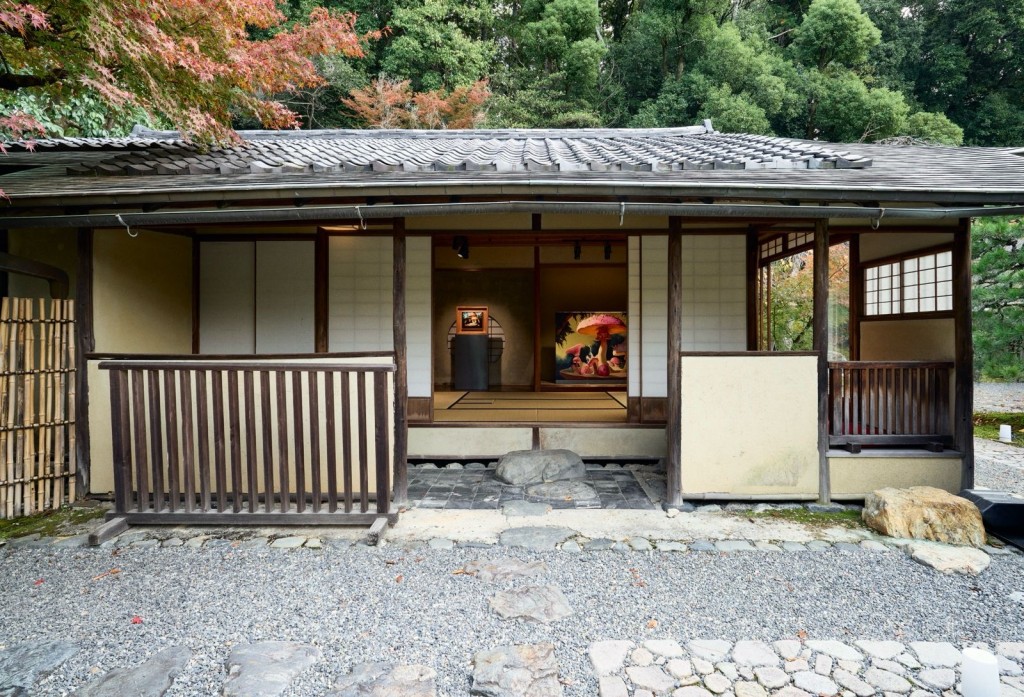
LIU BIN
Your recurring use of mushrooms is striking. What first drew you to this motif?
Mushrooms grow in unusual ways. They thrive in darkness, feeding quietly on soil and decaying wood before erupting suddenly into view—only to vanish again as quickly. Underground, their mycelial networks form vast, interconnected systems nicknamed the “Wood Wide Web.” They transmit nutrients and even warning signals between plants. Some species contain psychoactive compounds that alter perception entirely.
For me, mushrooms extend far beyond biology; they embody stored energy, ecological intelligence, even a kind of spiritual messenger between life and death.
How do you interpret the theme of the “Middle Lands” in this exhibition?
I see the “Middle Lands” as a liminal zone—a threshold that is neither a beginning nor an end. It suggests transition, uncertainty, possibility. In Confucian thought, it also points to harmony and balance. In many religions, it is simply the material world we live in, where humans experience joy, suffering, moral choice, learning and growth before finding their final destination.
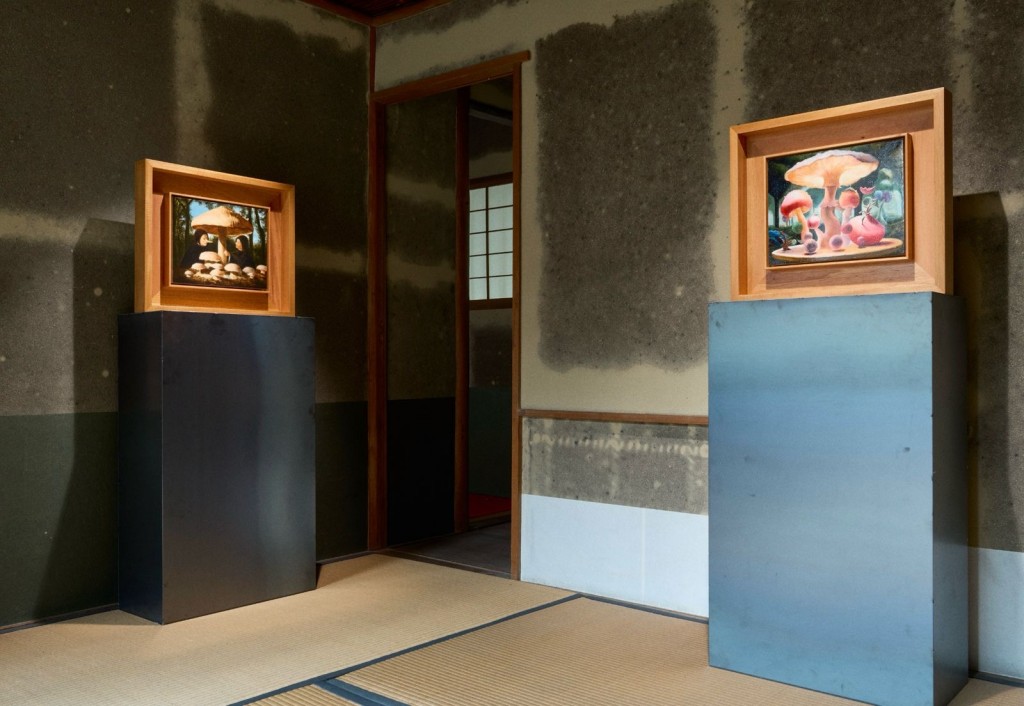
Showing at Konkai-Komyoji this time, did the Buddhist and natural environment affect how you approached the exhibition?
This exhibition at Kyoto’s Kōmyō-ji Temple differs from previous ones; I feel the context of the works has been altered. In a gallery setting, the distorted forms and fantastical scenes in my paintings may appear bizarre. But within the quiet, contemplative atmosphere of the temple, these images harmonize with Buddhist ideas of impermanence and non-self. Exhibiting there felt like a kind of “consecration”, the illusion of the artwork and the reality of the temple mutually reinforce each other.
How do you feel about audiences interpreting your work in different ways?
The painting presents only a framework; what matters is the “unfilled space” that viewers complete through their own experiences and imagination. The work is only truly finished when someone engages with it. Every interpretation is a kind of pioneeting and gift.
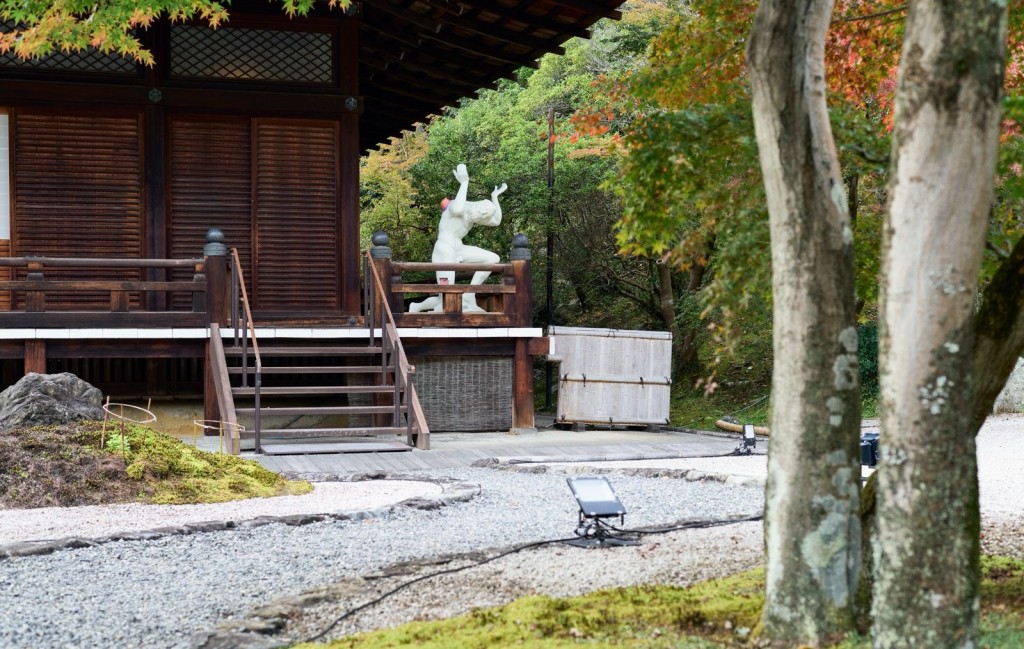
Life and death appear frequently in your work. How do you understand this theme?The life cycle of a mushroom is a condensed drama of mortality. It rises from decay, lives intensely, spreads its spores, collapses, and dissolves. It is a perfect metaphor for the impermanence and glory in life. Art, however, resists death. A poem, a painting, a melody can outlast us. To create is to push back against death. Transcending time is art’s most primal impulse, a testament to the positive affirmation of “living toward death.”
Your works feel rooted in nature yet also dreamlike. How do you approach the interplay of reality and illusion?
To me they are like a mirror and a lamp—reflection and illumination. There is no absolute reality or absolute illusion; they spiral into one another. What we call “illusion” might simply be another layer of reality revealing itself. They coexist rather than oppose.
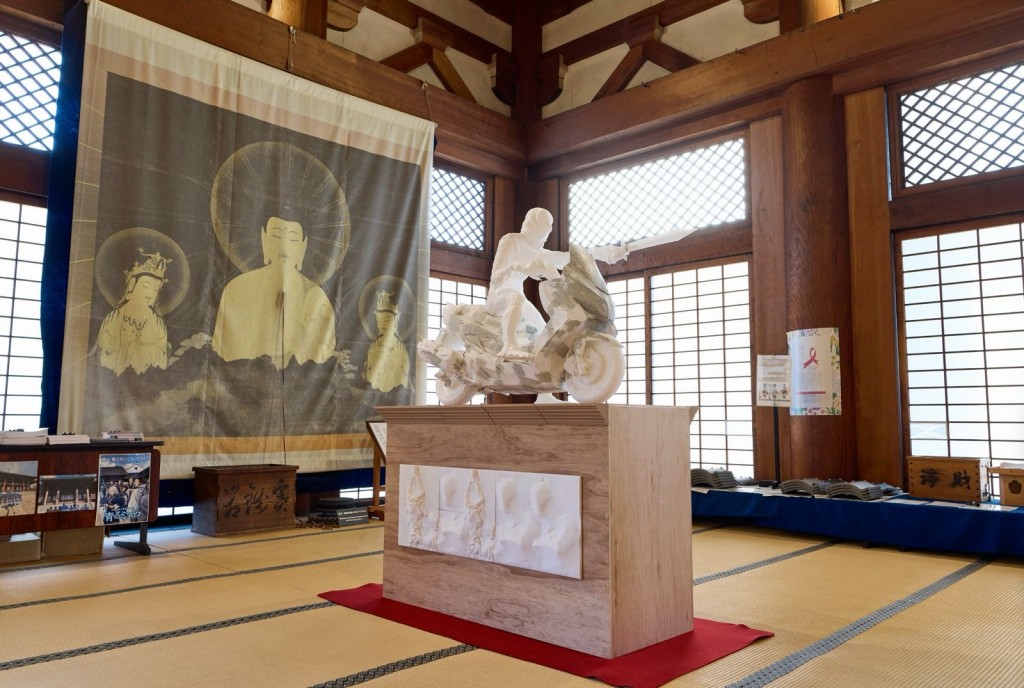
Exhibited alongside Kumagai’s sculptures, how do you perceive the dialogue between the two practices?
We had never met before this project, yet our works seem to explore similar questions. That’s the power of art—it can bypass time and distance and achieve intellectual resonance. I look forward to deeper exchanges with him.
Light plays a delicate role in your paintings. How do you handle light in your work?
I often work wet-on-wet to retain a diffuse glow. I prefer light that has no clear source—like a soft overcast sky. It erases time and creates a transitional space between day and night, reality and dream. It illuminates without dominating.
What do you hope viewers take away from your works?
A quiet strength and an open question.
What is the most memorable about this exhibition?
I am grateful to the family and friends who helped make it possible. Also, the meditative aura of Konkai-Komyoji felt deeply aligned with my work. And I’m very excited to exhibit with Kumagai.
Who or what has most shaped your artistic journey?
Constant changes in my living environment, the deaths of loved ones, and especially my father. He chose a sea burial and told me before he passed away, “The sea connects everything. Wherever you see the sea, you see me.” My work isn’t about mourning death or griefing over loss; but rather it’s about honoring connection and expressing a more intimate existence.
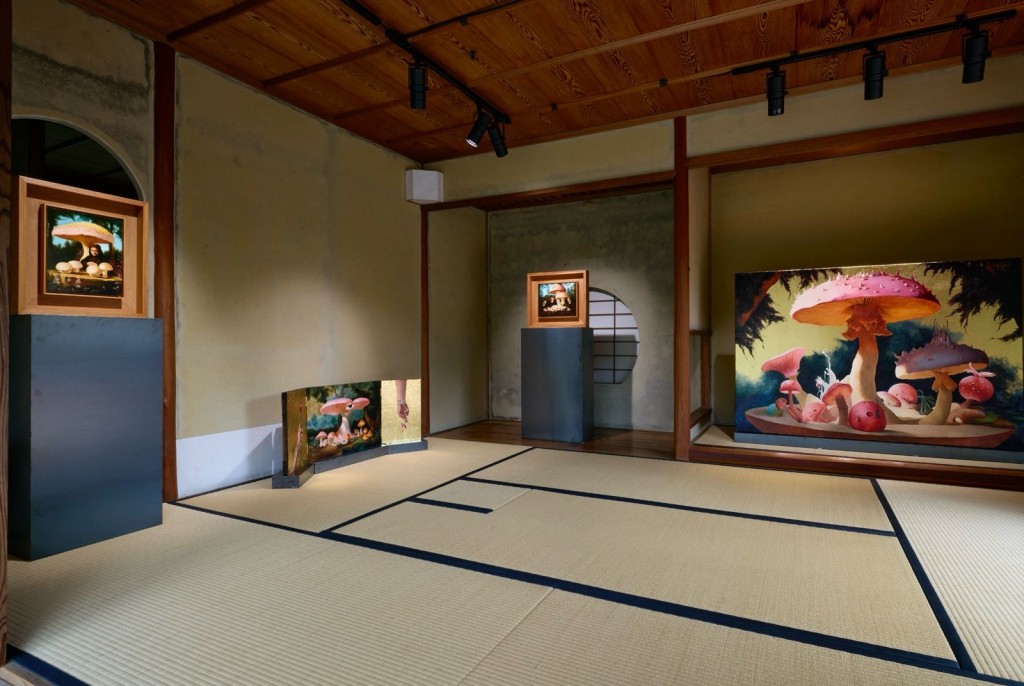
TAKUYA KUMAGAI
Mythology appears frequently in your practice. When did this interest begin?
After university, I read widely on religion and its history, not from faith, but from a comparative perspective. At the same time, my early sculpture training involved copying Greek and Roman works, which deepened my connection with mythology.
How do you interpret the idea of the “Middle Lands” in this exhibition?
In life, we constantly encounter states of “in-between.” When reflecting on Japan, or my identity as an artist here, I often feel this sense of being situated between worlds. My work often portrays a state that exists between two extremes—ambiguous, neither one thing nor the other. In that sense, the theme fits my practice very well.
Your sculptures combine strong physicality with emotional intensity. How do you balance the two?
Between 2021 and 2023, I created a series focused on masculinity and sexuality, confronting my own frustrations and anger toward the body. Those works were the most visceral. What steadied me were the academic rigor of sculpture itself and the intrinsic qualities of the materials I use.
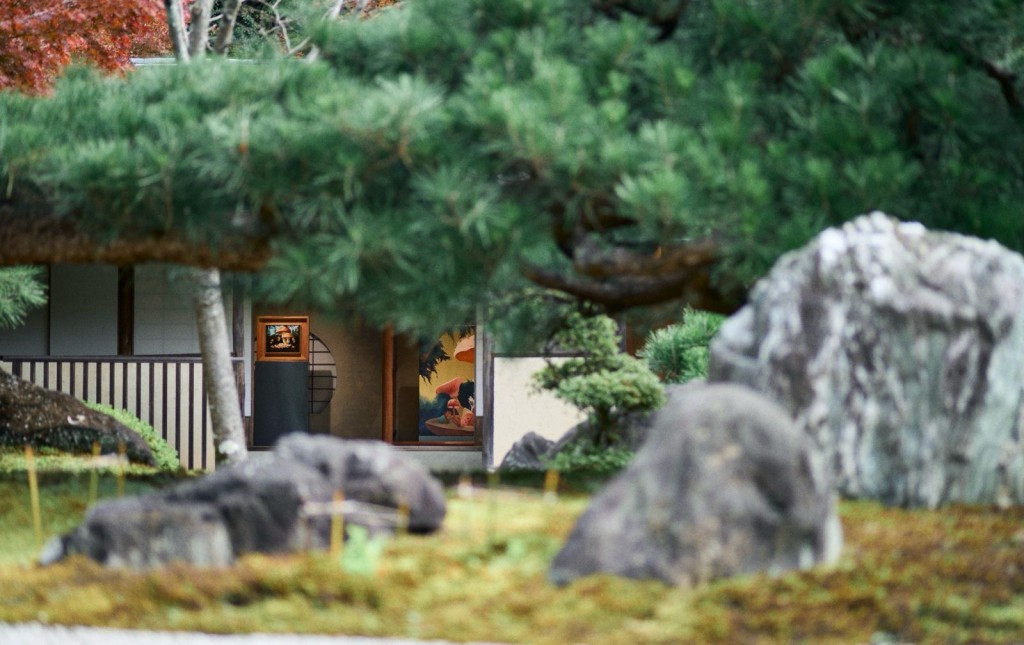
How does exhibiting in a temple setting shape your approach?
I once exhibited in a traditional Japanese room and was surprised by how naturally the works fit. For this exhibition, I keep imagining how the new sculptures will inhabit the temple’s architecture. Incorporating elements of the site might make the presentation even more complete.
Does your interest in mythology also shape your thoughts on life and death?
Mythology often blends absurdity with vivid humanity; this tension fascinates me. Some of my works echo that sensibility, which can relate to life and death. However, recently, I have been drawn toward more material and rational views of the human condition, rather than focusing directly on mortality.
What do you hope viewers experience in your work?
Firstly, I hope viewers can gain a pure, intuitive pleasure. Beneath that, I hope they sense the complex questions and sculptural intentions embedded in the forms. Ideally, both layers coexist in their viewing experience.
Exhibiting together with Liu Bin, what kind of dialogue do you anticipate?
I see shared symbolic threads in our practices. Even the colors and forms have unexpected parallels. I am eager to see how they interact once installed in the space.
What does it mean for you to present your work in your home city of Kyoto?
It means a great deal. Showing my work in the place I grew up, and having people here encounter it, reminds me that I’m still growing and living as an artist.
What moment during preparation left the deepest impression?
Visiting Konkai-Komyoji for the first time. Despite being familiar with the Okazaki area, I had never entered this specific precinct. Its scale and solemnity were astonishing.
Will mythology continue to shape your future practice?
Mythology was my entry point into sculpture, so it will always remain in my conscience. But I want to stay responsive to the world’s latest states and allow my themes to evolve. Mythology reveals the unchanging core of humanity; that part stays with me no matter what.





